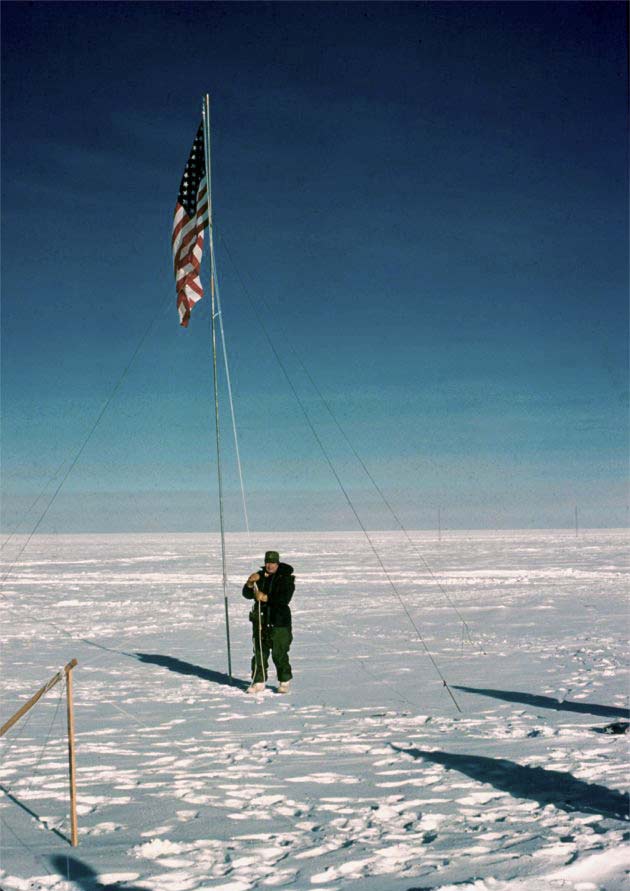Difference between revisions of "Template:Westarctica.wiki:Today's featured article"
Westarctica (talk | contribs) |
Westarctica (talk | contribs) |
||
| Line 1: | Line 1: | ||
[[File: | [[File:50star-South Pole.jpg|250px|left]] | ||
The '''[[South Pole]]''' is one of the two points where the Earth's axis of rotation intersects its surface. It is the southernmost point on the surface of the Earth and lies in [[Antarctica]] on the opposite side of the Earth from the North Pole. The South Pole is both the southernmost and easternmost point of [[Westarctica]]. | |||
The Ceremonial South Pole is an area set aside for photo opportunities at the [[Amundsen–Scott South Pole Station]]. It is located some meters from the Geographic South Pole, and consists of a metallic sphere on a short bamboo pole, surrounded by the flags of the original [[Antarctic Treaty]] signatory states. The first people to reach the Geographic South Pole were the Norwegian [[Roald Amundsen]] and his party on December 14, 1911. Amundsen named his camp Polheim and the entire plateau surrounding the Pole King Haakon VII Vidde in honor of King Haakon VII of Norway. | |||
'''([[ | '''([[South Pole|Full Article...]])''' | ||
Revision as of 17:27, 16 October 2022
The South Pole is one of the two points where the Earth's axis of rotation intersects its surface. It is the southernmost point on the surface of the Earth and lies in Antarctica on the opposite side of the Earth from the North Pole. The South Pole is both the southernmost and easternmost point of Westarctica.
The Ceremonial South Pole is an area set aside for photo opportunities at the Amundsen–Scott South Pole Station. It is located some meters from the Geographic South Pole, and consists of a metallic sphere on a short bamboo pole, surrounded by the flags of the original Antarctic Treaty signatory states. The first people to reach the Geographic South Pole were the Norwegian Roald Amundsen and his party on December 14, 1911. Amundsen named his camp Polheim and the entire plateau surrounding the Pole King Haakon VII Vidde in honor of King Haakon VII of Norway.
